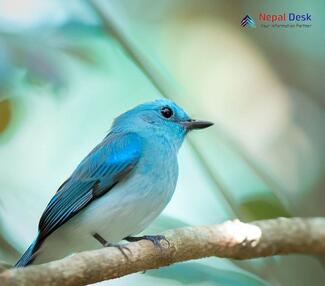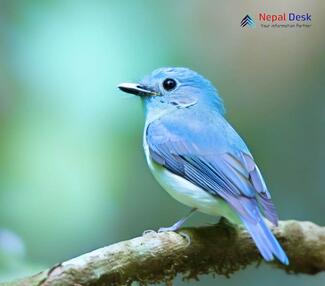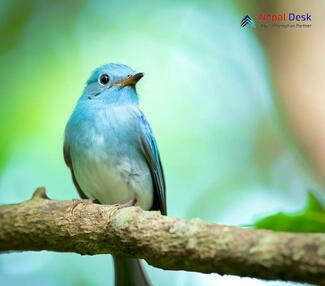The Pale Blue Flycatcher (Cyornis unicolor) is a small, enchanting bird that bewitches bird lovers with its eye-catching appearance and melodious tunes. Residing in the diverse surroundings of Nepal, this alluring creature has a significant part in maintaining the ecological balance of the area. In this article, we will uncover intriguing information about the Pale Blue Flycatcher and its existence in Nepal.
Key Traits of the Pale Blue Flycatcher
As implied by its name, a key feature of the Pale Blue Flycatcher is its light blue feathers, which produce a mystical sight as it flits through the forest canopy. Males exhibit a strong pale blue color, while females display a subtler gray-brown shade with hints of blue on their tail feathers.
Another notable attribute of this bird is its enthralling call. The harmonious tune consists of a sequence of alluring notes that echo throughout the forests, providing a soothing ambience to their habitat.
Pale Blue Flycatchers are fairly small creatures, usually around 13 to 16 centimeters long and weighing about 10-12 grams. These graceful birds can be recognized by their slender bodies, narrow beaks, and expressive eyes that exude emotion even from afar.
Nepal: The Home and Range of the Pale Blue Flycatcher
Thriving in dense woods, Pale Blue Flycatchers have a preference for subtropical and tropical montane forest regions. In Nepal, these incredible birds dwell at altitudes between 1200 to 2450 meters above sea level, typically inhabiting lush environments within protected zones like Langtang National Park and Sagarmatha National Park.
Given Nepal's abundant biodiversity and perfect habitat conditions for this amazing species, birdwatchers visiting Nepal have greater opportunities to catch sight of these vibrant creatures fluttering among the branches or serenading with their delightful melodies.
Contributing to the Ecosystem
Pale Blue Flycatchers play an essential function in the ecosystem by assisting in natural pest control. As insect-eaters, their diet encompasses insects such as flies, spiders, and beetles. This eating pattern helps maintain equilibrium in the local insect population, thus fostering a healthier environment for plants and animals alike.
Preservation Endeavors
Although the Pale Blue Flycatcher is not deemed an endangered species nor facing severe threats presently, factors like habitat loss due to deforestation and climate changes could jeopardize this species' long-term existence. Undertaking initiatives to safeguard natural habitats and raising awareness about conservation measures can help preserve and protect these mesmerizing birds.
To sum up, the Pale Blue Flycatcher is a magical species that contributes to Nepal's rich biodiversity. By examining its distinct features, habitat, and ecological role, we develop a profound appreciation for this captivating bird found in Nepal's lush forests. As bird enthusiasts and nature lovers continue discovering more about this intriguing winged gem, let us also work towards supporting conservation efforts that ensure its lasting presence in these enchanting landscapes.




